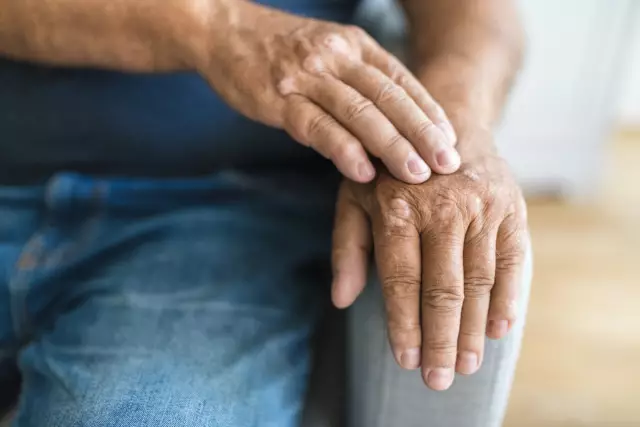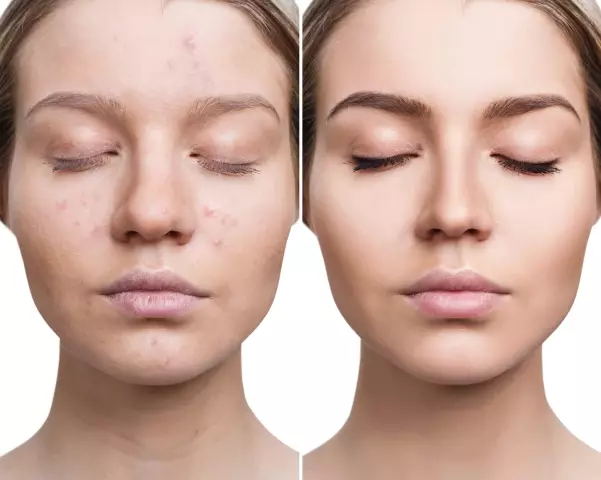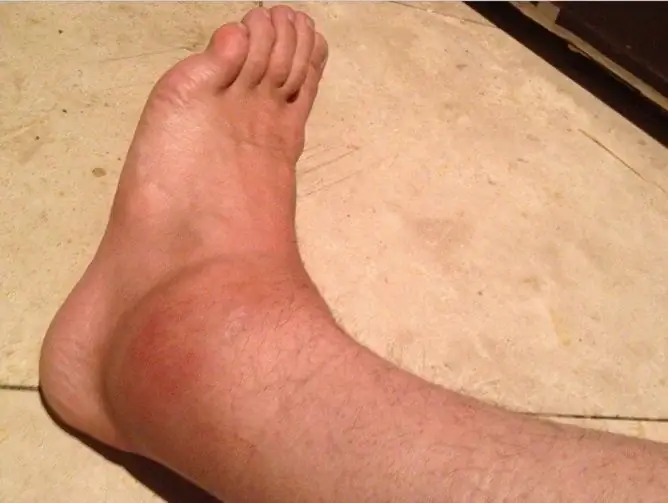- Author Rachel Wainwright [email protected].
- Public 2024-01-15 19:51.
- Last modified 2025-11-02 20:14.
Ankle swelling: causes and treatment
The content of the article:
-
Why does the ankle swell
- Arthritis
- Arthrosis
- Damage to other structures of the joint
- Other diseases
- Diagnostics
-
How to treat edema
- What to do in case of injury
- Main treatment
- Folk remedies
- Video
The causes of ankle swelling can be very different, ranging from the consequences of trauma, ending with a malignant tumor and heart damage. A symptom should not be underestimated as it often indicates a serious illness. The consequences depend not only on the cause, but also on the degree of joint dysfunction.
Why does the ankle swell
The ankle joint is the articulation of the shin bones with the foot. Its edema is a sign of inflammation, accumulation of synovial fluid in the joint cavity, or accumulation of fluid in peripheral tissues of the body. The photo shows how the swelling in the ankle area looks.

Ankle swelling is most often caused by trauma or inflammation of the joint tissues
Ankle swelling can occur for local and general causes. Local diseases include those diseases that directly affect the area of the joint and the surrounding tissues - arthritis, arthrosis, synovitis, bursitis, tendinitis. Common diseases include diseases of the internal organs and connective tissue, which are accompanied by swelling of the ankle area.
Arthritis
The most common cause of ankle swelling is arthritis. Arthritis is an inflammatory disease of the joints. Arthritis is always manifested by signs of inflammation: edema, redness of the skin, local fever, dysfunction of the limb.
Arthritis can develop for a variety of reasons. There are the following varieties:
- post - traumatic - occurs after an injury;
- reactive - occurs as a reaction to a previous infection;
- purulent - accompanied by purulent inflammation, the reason is the ingress of bacteria;
- rheumatoid - has an autoimmune nature;
- gouty - develops with gout.
Arthrosis
Arthrosis is a degenerative joint disease. The risk of developing osteoarthritis increases in a person with age. The main symptoms of arthrosis are pain and dysfunction of the limb.
With arthrosis, inflammation is usually absent. This also applies to such signs as redness, local temperature rise. Puffiness with arthrosis occurs with the development of complications in the form of reactive synovitis.
Damage to other structures of the joint
The ankle area can swell if the following structures are affected:
- Tendons. When they become inflamed, tendonitis develops.
- Synovial membrane. With inflammation of the synovium, synovitis develops.
- Tendon bursa. With inflammation of the bursa, bursitis develops.
- Ligaments. The defeat of the ligaments occurs when they are stretched or ruptured.
With any of these conditions, the ankle area can swell.
Other diseases
Swelling of the ankle region can be a manifestation of not only articular pathology. The symptom can indicate different diseases. What pathologies can cause swelling of the ankle:
- heart failure;
- glomerulonephritis, nephrotic syndrome;
- systemic lupus erythematosus;
- liver disease;
- Varicose veins.
In addition to edema, other symptoms are characteristic for each pathology. For example, shortness of breath with heart failure, varicose veins, etc.
Diagnostics
Often, edema is just one of the symptoms of the disease. It is necessary to pay attention to other manifestations:
| Manifestation | Explanation |
| Pain | The area of the foot and ankle can be sore due to inflammation, especially with arthritis or synovitis. With heart or kidney pathology, the affected area is painless. |
| Limb dysfunction | The inability to carry out active movements indicates arthritis or arthrosis. In other diseases, movements are preserved. |
| Symmetry of defeat | If only the left or right joint is affected, it often indicates trauma or inflammation. In general diseases, the joints are affected symmetrically. |
| The nature of the edema | On palpation, the swelling can be soft or dense. |
Additional research methods are used for diagnosis:
- Complete blood count - allows you to identify signs of inflammation (leukocytosis, increased ESR).
- Plain radiography. Allows you to identify changes in the articular surfaces of bones in arthritis and arthrosis, the consequences of trauma.
- Doppler ultrasonography of the vessels of the legs. It is used to assess the condition of the valves of the veins, to identify vascular obstruction.
How to treat edema
Treatment directly depends on the cause that led to the swelling. Medications, physiotherapy are used. In some cases, surgical intervention is indicated. For example, with a traumatic injury, deforming arthrosis or arthritis. It is not recommended to self-medicate; therapy should be selected by a doctor in each individual case.
What to do in case of injury
If swelling of the ankle occurs after injury, first aid is necessary:
- Stop stressing the ankle.
- Immobilize (immobilize) the affected limb.
- Apply ice or cold compress to the affected area.
It is contraindicated to warm a limb or use folk remedies immediately after injury. For further treatment, you must consult a doctor.

In case of injury, restrict movement in the ankle joint
Main treatment
The main treatment depends on the cause of the swelling:
| Cause | Treatment |
| Inflammatory diseases (arthritis, synovitis, bursitis, tendonitis) |
The basis of therapy is the use of anti-inflammatory drugs. They are of general and local action. Generally acting drugs are available in the form of tablets and ampoules for injection. These include Movalis, Ibuprofen, Nimesil. Topical preparations are available in the form of gels and ointments. For example, Voltaren gel, Diclofenac. |
| Arthrosis | Chondroprotectors are used - chondroitin and hyaluronic acid. |
| Autoimmune damage | Glucocorticoids are used: Prednisolone, Dexamethasone. |
| Heart failure | For symptomatic treatment, diuretics are prescribed - Furosemide, Hypothiazide, Spironolactone. |
| Injury | Surgery is often required. |
After stopping the acute process, physiotherapy is prescribed - electrophoresis, paraffin therapy, ultraviolet radiation.
Folk remedies
For swelling of the ankle, traditional medicine recommends applying fresh cabbage leaves to the affected area.
Video
We offer for viewing a video on the topic of the article.

Anna Kozlova Medical journalist About the author
Education: Rostov State Medical University, specialty "General Medicine".
Found a mistake in the text? Select it and press Ctrl + Enter.






